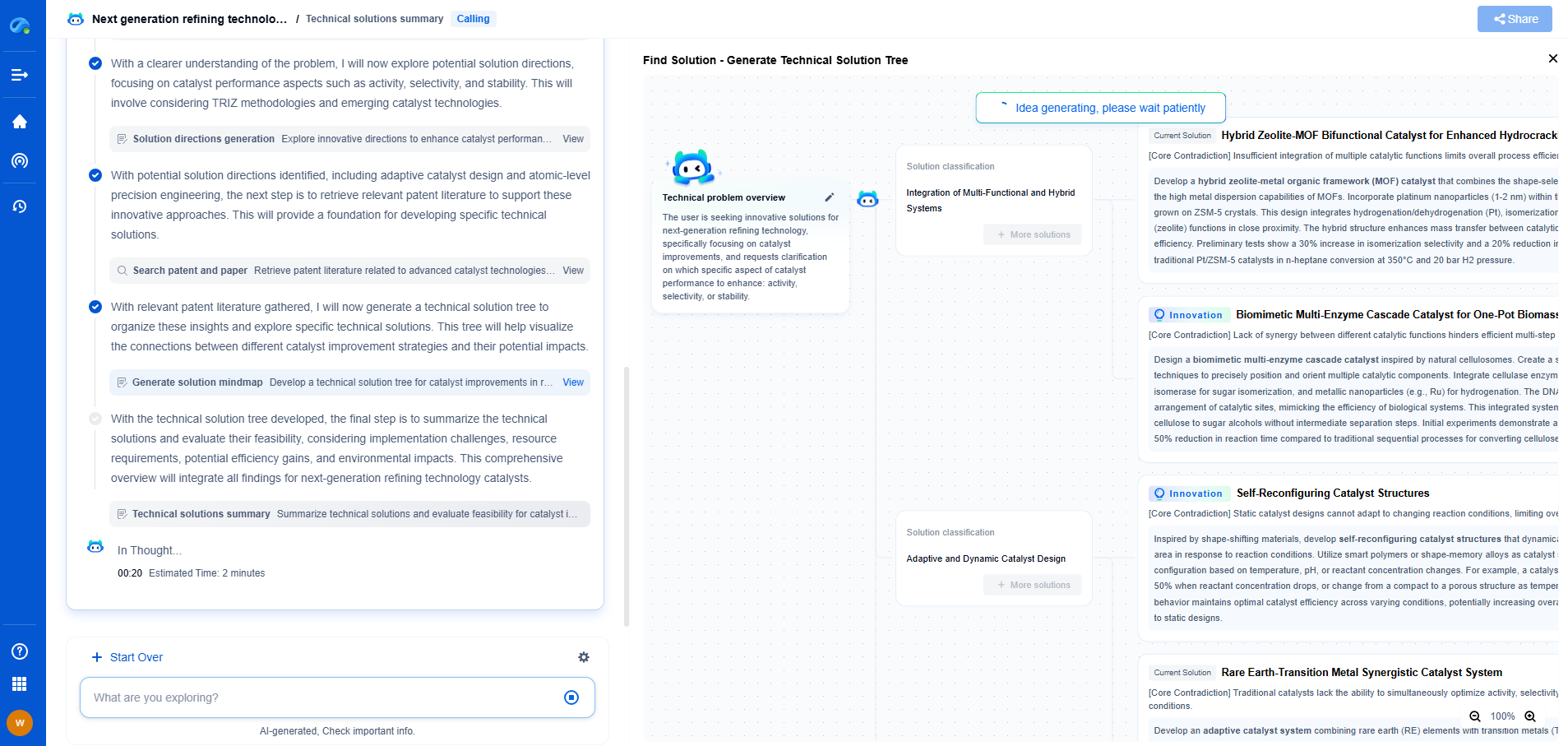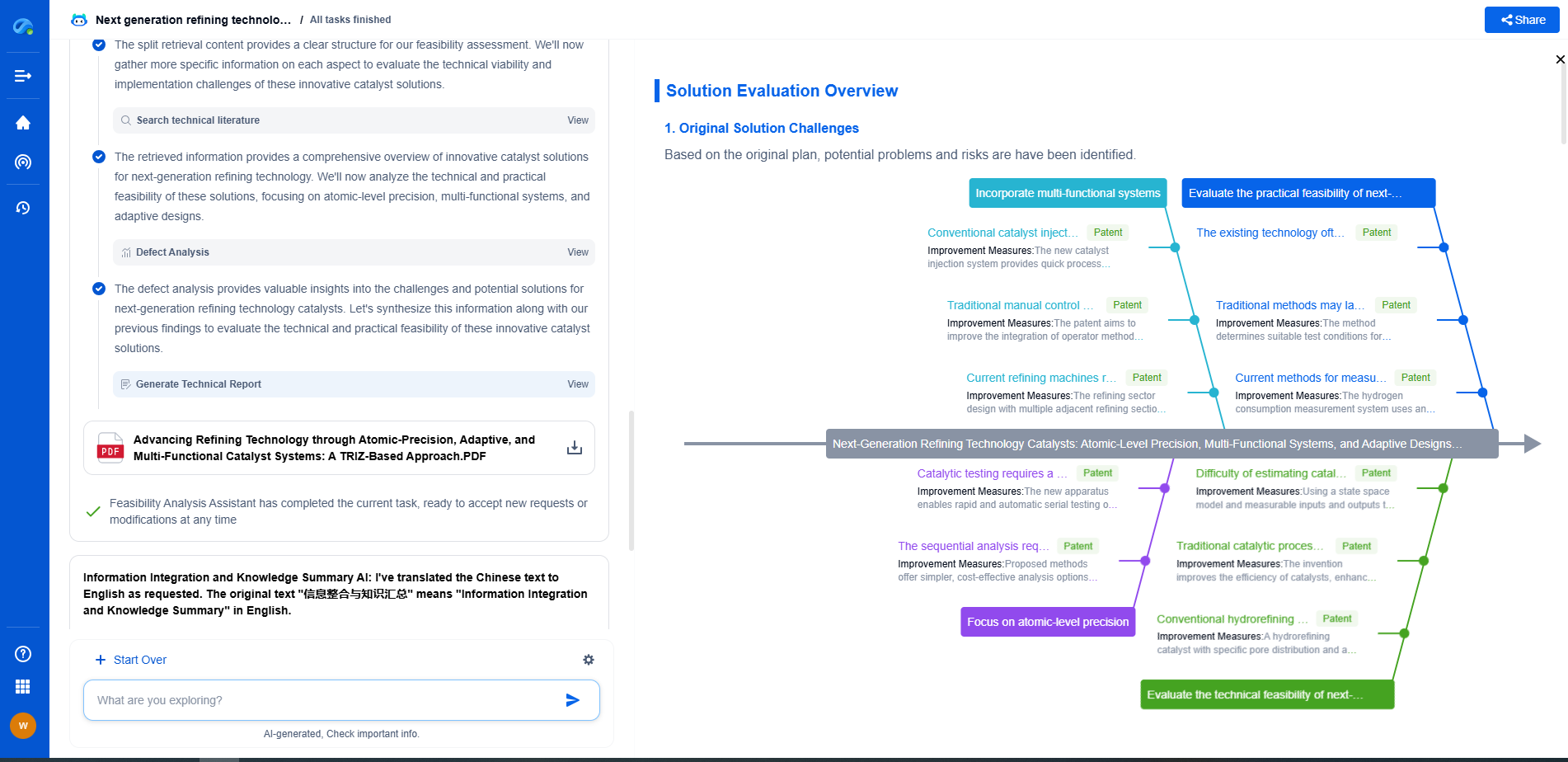Pipeline Commissioning 101: From Construction to First Flow
JUN 20, 2025 |
Pipeline commissioning is a critical phase in the lifecycle of any pipeline project, marking the transition from construction to operational readiness. It involves a series of systematic checks and processes aimed at ensuring the pipeline is ready for safe and efficient transportation of materials. This blog delves into the essential steps involved in pipeline commissioning, from the completion of construction to the moment the first flow of material occurs.
The Importance of Planning and Preparation
Effective planning is the cornerstone of successful pipeline commissioning. Before any physical work begins, it is crucial to develop a comprehensive commissioning plan that outlines all necessary procedures, schedules, and resources. This plan should include risk assessments, regulatory compliance checks, and communication strategies to keep all stakeholders informed. By having a detailed plan in place, potential challenges can be anticipated and mitigated, paving the way for a smooth transition.
Pre-Commissioning Activities
Pre-commissioning involves a series of preparatory tasks that set the stage for the main commissioning process. These activities include cleaning, gauging, and testing the pipeline to ensure it meets the required standards. Cleaning removes any construction debris or contaminants, while gauging ensures that the pipeline is free of obstructions and has a consistent internal diameter. Hydrostatic testing is then conducted to verify the pipeline's integrity and pressure capacity, addressing any leaks or weaknesses that could compromise safety.
Commissioning Phase: Bringing the Pipeline to Life
Once pre-commissioning is complete, the commissioning phase begins. This stage involves the introduction of the pipeline's intended medium, such as oil, gas, or water, into the system under controlled conditions. During this phase, system functionality is thoroughly evaluated, including testing instrumentation, control systems, and safety mechanisms. Flow tests are conducted to confirm that the pipeline can handle the operational pressures and flow rates it was designed for. This phase is critical for identifying any remaining issues before the pipeline is put into full operation.
Safety and Environmental Considerations
Safety is paramount during the commissioning process. Strict adherence to safety protocols is necessary to protect workers and the environment. This includes wearing appropriate personal protective equipment (PPE), conducting regular safety briefings, and having emergency response plans in place. Environmental considerations are equally important, with measures taken to prevent spills and minimize ecological impact. Compliance with local and international environmental regulations is essential to avoid legal and reputational repercussions.
Collaboration and Communication
Successful pipeline commissioning relies heavily on collaboration and communication among all parties involved. Engineers, construction teams, operators, and regulatory bodies must work together seamlessly to ensure all activities are coordinated effectively. Clear communication channels help to quickly resolve any issues that arise and keep the project on track. Regular progress updates and stakeholder meetings ensure everyone is aligned and informed throughout the process.
Transition to Operation: Achieving First Flow
The culmination of the commissioning process is the achievement of first flow, where the pipeline becomes operational and begins transporting the intended material. This milestone signifies that the pipeline has been tested, verified, and deemed safe for use. However, the work doesn't stop here. Continuous monitoring and maintenance are necessary to ensure the pipeline operates efficiently and remains in good condition over its lifespan.
Conclusion: The Path to Successful Pipeline Operation
Pipeline commissioning is a complex but essential process that bridges the gap between construction and operation. By following a structured approach, focusing on safety and environmental protection, and fostering collaboration, industry professionals can ensure a seamless transition to first flow. This not only guarantees the pipeline's functionality but also sets the foundation for its long-term success and reliability. As the energy and utility sectors continue to evolve, mastering the art of pipeline commissioning becomes increasingly important in meeting the demands of a growing world.
Transform the Way You Innovate in Pipeline Technology—with AI-Powered Intelligence
From corrosion-resistant materials to smart monitoring systems and advanced flow control mechanisms, the pipeline industry is undergoing rapid technological transformation. Yet keeping up with evolving engineering solutions, regulatory landscapes, and competitive patents can be a major bottleneck for R&D and IP teams.
Patsnap Eureka is your AI-powered research companion—built specifically for professionals in high-tech and infrastructure domains like pipeline technology. Whether you're designing high-pressure transport systems, assessing trenchless installation innovations, or safeguarding proprietary flow assurance solutions, Eureka provides real-time insights into global patent trends, emerging technologies, and R&D intelligence—all in one intuitive interface.
Empower your team to innovate faster, reduce technical blind spots, and stay ahead of industry shifts. Discover Patsnap Eureka today and bring clarity and confidence to your pipeline technology decisions.
- R&D
- Intellectual Property
- Life Sciences
- Materials
- Tech Scout
- Unparalleled Data Quality
- Higher Quality Content
- 60% Fewer Hallucinations
Browse by: Latest US Patents, China's latest patents, Technical Efficacy Thesaurus, Application Domain, Technology Topic, Popular Technical Reports.
© 2025 PatSnap. All rights reserved.Legal|Privacy policy|Modern Slavery Act Transparency Statement|Sitemap|About US| Contact US: help@patsnap.com

